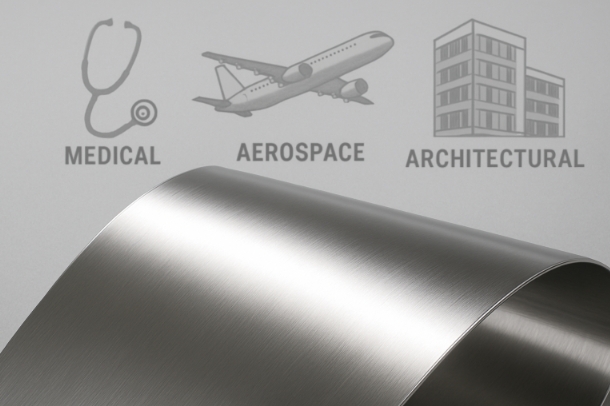
Precision polished stainless steel serves as the backbone of technological and design innovation across sectors demanding uncompromising quality and reliability. The unique combination of corrosion resistance, hygiene, and brilliant finish makes it indispensable to industries ranging from medical equipment to high-performance aerospace systems. For instance, ss 316 material properties are renowned for their exceptional durability and suitability for applications that require both toughness and purity, demonstrating why this alloy is often the preferred choice in demanding environments.
By adhering to stringent manufacturing protocols and international standards, precision polished stainless steel ensures not only aesthetic perfection but also structural integrity, factors critical in fields like healthcare and aviation. As modern design and engineering requirements evolve, so too do the standards and techniques associated with polished stainless steel, continually raising the bar for both performance and visual appeal.
The aerospace industry requires materials that offer outstanding strength, lightweight properties, and the ability to endure harsh environments. Precision polished stainless steel plays a crucial role here, especially in the fabrication of engine components, fasteners, and structural assemblies. Recent advancements focus on compliance with ISO 8074 and ISO 8075 standards, which specifically address surface treatments for austenitic and precipitation-hardening stainless steels, respectively. These global standards help maintain consistency in corrosion resistance and mechanical properties, both of which are essential for flight safety and operational dependability.
Medical Applications
Precision polished stainless steel is foundational to the medical industry, where its ability to resist corrosion, maintain sterility, and withstand rigorous sterilization processes ensures patient safety and regulatory compliance. Surgical instruments, such as scalpels, forceps, and scissors, are manufactured with meticulously polished surfaces to eliminate micro-crevices where bacteria could cling. Implants and prosthetics also benefit from these qualities, as a polished finish enhances biocompatibility and minimizes infection risks, supporting better patient outcomes and longevity of medical devices.
Polished stainless steel is a hallmark of contemporary architecture, renowned for both its lustrous finish and its inherent resilience. Its applications span elevator interiors, wall cladding, decorative panels, balustrades, and high-traffic kitchen or bathroom surfaces. Architects select this material not only for its modern, reflective qualities but also for its ability to withstand the elements and maintain its appearance with minimal upkeep. Polished stainless steel significantly contributes to sustainable architecture, providing structures with timeless appeal and ensuring longevity that aligns with green building practices.
To deliver uniformity and performance, the production of polished stainless steel adheres closely to rigorous standards. ASTM A554, for example, specifies requirements for welded mechanical tubing, focusing on aspects such as chemical composition, mechanical properties, and, crucially, surface finish. Such standards are essential in regulating production processes, ensuring that end-products feature both optimal strength and finish. Compliance with standards not only ensures a product’s physical integrity but also builds end-user confidence across critical applications.
Innovative polishing techniques have revolutionized stainless steel finishing. Among them, electropolishing stands out for its ability to refine surface characteristics at the microscopic level. By dissolving a controlled layer of material electrolytically, electropolishing achieves an ultra-smooth, mirror-like finish. This process not only heightens the material’s reflectivity and cleanliness but also boosts its corrosion resistance, an advantage in environments where hygiene and sterility are non-negotiable, such as food processing plants and biomedical labs. Mechanically polished and buffed finishes, while less costly, are often deployed where a high level of brightness and uniformity is required but absolute sterility is less critical.

This post has been authored and published by one of our premium contributors, who are experts in their fields. They bring high-quality, well-researched content that adds significant value to our platform.